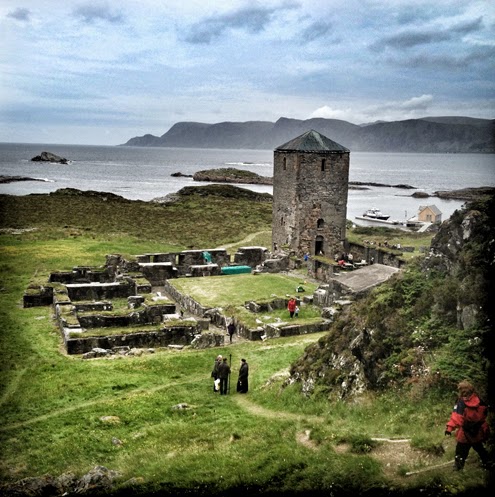Ulf Ekman skriver mer om hvorfor han ble katolikk
Avisa Dagen referer i dag ganske grundig fra en artikkel Ulf Ekman skrev i Livets Ords eget teologiske tidsskrift «Keryx». Her forklarer han grundigere hvorfor han og hans kone ble katolikker. Det er flere elementer her jeg kjenner igjen fra min egen prosess i 1992-94.
Ekman starter med å understreke at hans egen og kona Birgittas tilnærming til den katolske kirke har pågått i drøyt ti års tid. Mot slutten av 1990-tallet og starten av 2000-tallet kom han i kontakt med «katolsk litteratur som møtte både personlige og teologiske behov».
– Vi har mer og mer forstått at fullheten i Kristi kropp finnes nærværende i den katolske kirke og at denne kirken faktisk er den kirke som Jesus innstiftet her på jorden, skriver Ekman.
Han beskriver hvordan det sakte, men sikkert har vokst frem en overbevisning om at det å i «en evangelikal/ karismatisk/ pentekostal kristenhet … ikke er tilstrekkelig». ….
… I takt med at han har nærmet seg den katolske kirke har han måttet foreta «en revidering av mange teologiske oppfatning». Det første han tok et oppgjør med var det han beskriver som «en dyp anti-katolsk holdning» som han mener særpreger svenske protestantiske kristne. I tillegg kommer det han karakteriserer som en særlig form for frikirkelig «erstatningsteologi», som går ut på at man har en tendens til å mene at de nye kirkelige bevegelsene tar de historiske kirkenes plass. …
… Ekman .. kan ikke lenger stå for det han kaller «en radikal reformatorisk sola-Sciptura-forståelse». Han skriver: Det er verdt å påpeke at man ikke noe sted i Bibelen kan finne at det er «Bibelen alene» som gjelder. Uttrykket finnes ikke der. Jeg begynte å forstå at uttrykket «Skriftens primat» bedre tar opp i seg den bibeltroskap og bibelforståelse vi alle bør ha. Med andre ord, vi tror på Bibelen fullt ut, men kan faktisk også stole på Kirken som veileder i forståelsen av Skriften og ikke bare på oss selv, …
… I en tid da mange protestantiske kirker og trossamfunn – og faktisk også en del vekkelsesbevegelser – taper terreng på det moralske området og blir pragmatiske, så står den katolske kirke fast. Ingen annen kirke uttrykker seg med en slik autoritet, så frimodig og samtidig så sjelesørgerisk når det gjelder moral, både privatmoral og når det gjelder sosial samvittighet. …
… Mot slutten av artikkelen tar han opp to av de mest kontroversielle sidene ved katolisismen sett fra protestantisk side; paveembetet … Er jeg da villig til å stille meg under paven, spør han retorisk og svarer selv: Ja, faktisk. Alle kirker trenger et overhode. Det er ikke noe rart med det. Og så tror jeg at at pavens embete, Peters embete, går tilbake til apostelen Peter og det Jesus sa til ham i Matteus 16:16-18. …
… Også når det gjelder synet på Maria bekjenner den tidligere frikirkelederen seg nå entusiastisk til klassisk katolsk teologi. Han skriver: Ja, tenk hvilken oppdagelse det var å se hvor mye bibelen faktisk taler om henne. Hun er sannelig unik og skal prises av alle slekter. (Luk 1:48). Tenk at hun bar Gud under sitt hjerte og fødte den andre personen i Guddommen, Sønnen. Hun er Faderens datter, Sønnens mor og Åndens brud. …



